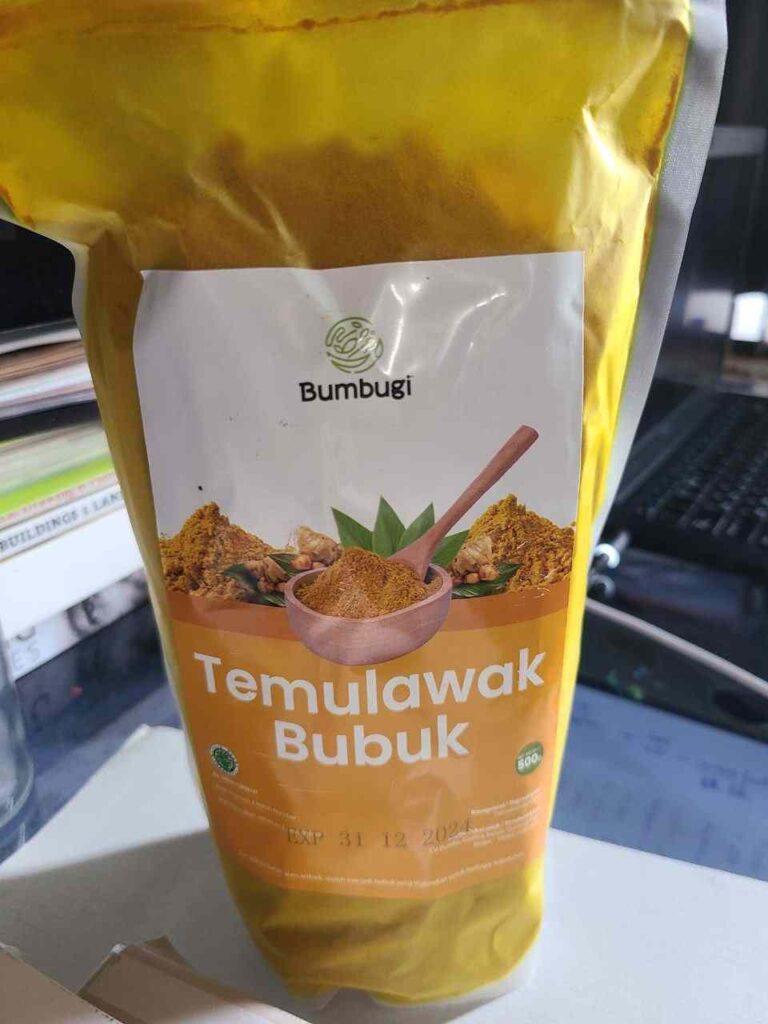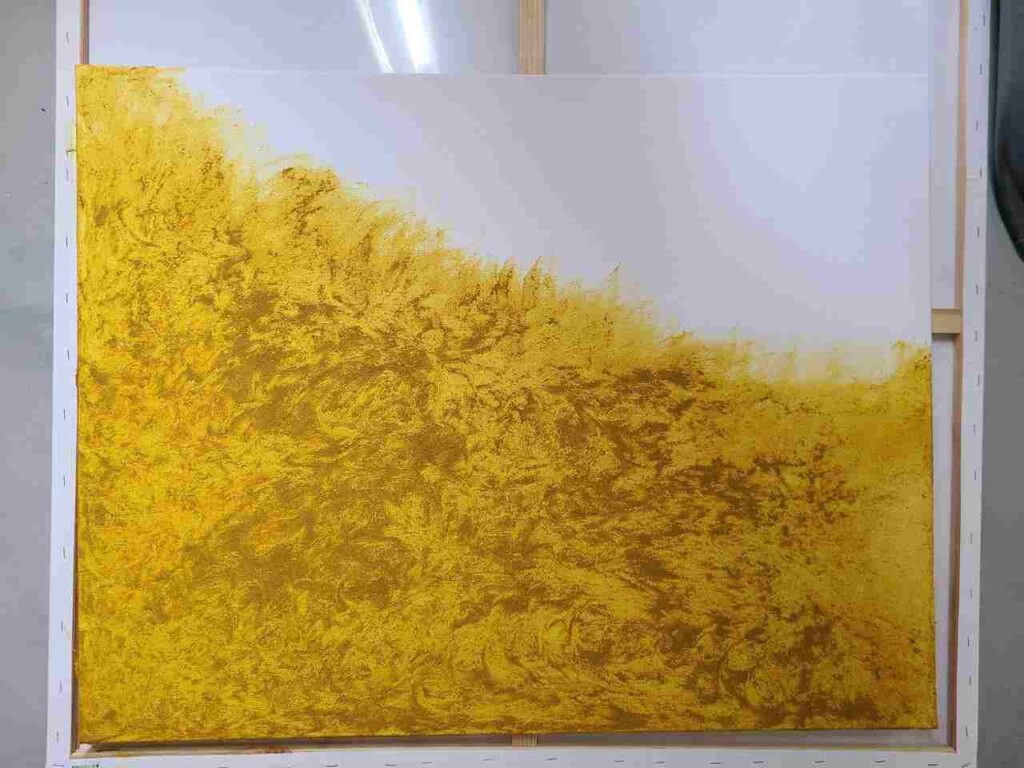Last Updated on November 28, 2023 by Masha Eretnova
I love doing painting experiments and explore what creation are beyond traditional painting techniques and “rules”.
As an abstract artist I explore texture and color a lot, and the base of each color is a pigment. In fact, many flowers and food can be used to make pigmetns and be used in painting.
Today it is the time for turmeric aka curcuma pigment!

Table of Contents
This article contains affiliate links. It means no extra cost for you but a little commission (2-3%) for me to support my hobby and blog. Thank you!
A bit of science first: Can you use curcuma for painting?
While it is not traditionally used as an artist’s paint, you can use turmeric powder with water or painting medium to make yellow or earthy colors and paint on paper and canvas. It is perfect for staining.
Curcuma, or turmeric, is a natural yellow spice often used in cooking and for its potential health benefits.
One thing your probably noticed about turmeric is when you cut it and leave it on the table it will stain both – the knife and the table to the point that it’s impossible to wash off.
That’s probably where the idea to try it as a painting medium came from!

Turmeric Pigment Characteristics:
- Vibrant Yellow Hue: Turmeric imparts a bright and vibrant yellow color, almost orange.
- Natural Origin: Derived from the turmeric root, it’s a natural pigment that has been used traditionally for dyeing fabrics and in cooking. It doesn’t have any chemicals though it can still cause allergies in some people.
- Staining Properties: Turmeric has very strong staining properties.
- Mediocre Lightfastness: The color derived from turmeric may be sensitive to light and can fade over time especially if exposed to sunlight. Think how you can protect the painting.
- Binder Requirement: To use turmeric as a pigment in painting, a binder is necessary. Traditional binders like acrylic medium or gel for acrylic-based paint, gum arabic for watercolor and gouache or oil for oil-based paint.
- Natural and Sustainable: Turmeric is a natural and sustainable option for those interested in using eco-friendly and organic materials in their art. Thus, turmeric powder can be an eco-friendly and completely safe alternative for some commercially produced paints.
- Not archival: turmeric paintings may be not the best for sale as we cannot predict how long the painting will last. Organic matters mostly have risks of molding and fading.
- Unique Aroma: Turmeric has a distinct smell, and its use in art may contribute a unique scent to the creative process. When I mix it and apply onto the canvas my whole art room smells fresh and pungy! Natural air freshener 🙂
The use of turmeric in fabric dyeing dates back to ancient times, with records indicating its presence in regions like India and Southeast Asia.
These cultures discovered that the natural pigments present in turmeric could be extracted and used to dye textiles.
Turmeric dye was commonly used to color traditional textiles such as saris, turbans, and other garments. The bright yellow color symbolized auspiciousness, prosperity, and purity in many cultures.
Today we should be able to combine modern techniques with old traditions, especially in art – as it is a safe space for experiments.
My Turmeric Painting Experiment on Canvas
I had an idea in my head to work with pure pigments for my next painting and when I saw turmeric powder I thought about sand storm.

I was using:
- Canvas (you can use paper or fabric as well)
- Turmeric powder (buy any cheap one with 100% turmeric powder composition)
- Water
- Pebeo Acrylic gel
Steps:
- First, I mixed turmeric with a little bit of warm water. It is important to first dilute the pigment with alcohol or water so it starts binding.
Mix it well into a paste. Making the paint with turmeric doesn’t require any heat or expensive tools or materials.
2. Then I added (not really measuring) acrylic gel – the same I use to make acrylic paint – and mixed again.
Done! It is ready to be applied. It should not be too runny or dripping.
My powder was quite coarse so it had visible texture and particles – as my idea was sand storm it was perfect.
3. I pulled a nitril glove and started spreading the mixture (of course you can use a brush or a palette knife but I wanted to feel it!
The turmeric easily stains the canvas or paper with bright yellow-orange color and the aroma is wonderful!
I think it is the best for staining the background but be careful with surrounding as it can stain everything else.
4. I let it dry and I will update the post once it’s dried to see if there is any issues with cracks or flaking. Turmeric will dry slower that regular acrylic paint, so be patient 🙂

Tips on using turmeric pigment:
- Have fun: While researching I also found out that turmeric’s staining properties can be modified by adding other natural ingredients. For example, you can experiment with adding a bit of lemon juice for a more orange hue. Try baking soda!
- Experiment in Small Scale: Start with a small-scale experiment to understand how turmeric behaves as a pigment and how strongly it stains the painting surface.
- Note Color Changes: Turmeric may undergo color changes over time, especially when exposed to light. Observe these changes as part of your experiment.
- Combine with Other Colors: Experiment by combining turmeric with other natural pigments or commercial paint colors for unique effects.
Remember, the goal of the turmeric painting experiment is to explore and have fun! I had lots of joy working with pigments – I feel like a scientist and a painter from old times at the same time – it is amazing!
The same way you can use for painting cinnamon powder and other spices or even ground coffee!
PS – spoiler for those who will try baking soda – it give gorgeous purple color!

Masha Eretnova, born in 1991, is a Buenos Aires-based certified teacher, artist, and member of the Professional Artist Association with 20+ years of personal painting journey.
She started painting and drawing very early and is now an international abstract artist and educator passionate about acrylic painting, gouache, and crafts.
Her works are part of international exhibitions and contests, including ArtlyMix (Brazil), Al-Tiba 9 (Spain), Exhibizone (Canada), Italy, and many more.
Besides her artistic pursuits, Masha holds a post-grad diploma in Teaching Film Photography and 2 music school diplomas: piano and opera singing.
